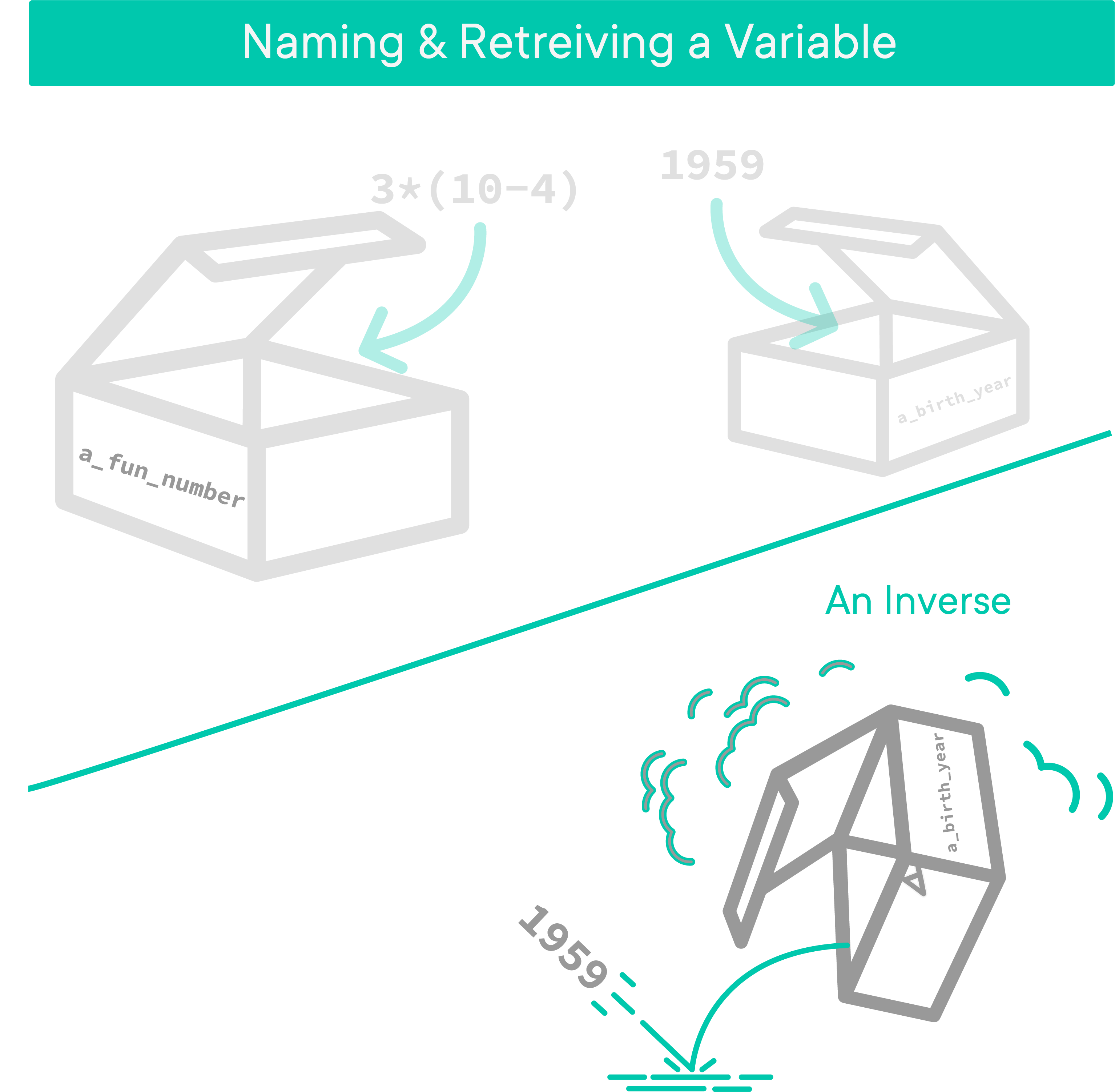- Trace Resolution of Variables to Scalar Values to Return Value
- Recognize
+as the symbol for addition - Demonstrate the addition operator
- Recognize
-as the symbol for subtraction - Demonstrate the subtraction operator
- Recognize
*as the symbol for multiplication - Demonstrate the multiplication operator
- Recognize
/as the symbol for division - Demonstrate the division operator
- Identify how division in Ruby differs from normal division
When we first introduced expressions, we presented a series of operators and their corresponding operations that were familiar from basic arithmetic:
| Operator | Operation | Note |
|---|---|---|
+ |
Addition | |
- |
Subtraction | |
* |
Multiplication | We use * instead of × because it looks like x-the-letter |
/ |
Division | We use / instead of ÷ because that symbol's not on keyboards |
** |
Exponentiation | We use ** instead of ^ because ^ means something else in programming languages |
() |
Association | Expressions inside of () get evaluated earlier |
Back then, we didn't know how to use variable lookup expressions yet. We
had an intuitive grasp of how operators worked with constant expressions
like 5 + 1. Knowing what 5 and 1 and + mean meant that we could guess
that the expression would evaluate to 6.
But how does Ruby work with an expression like x + 1? It uses the "variable
lookup expression!"
When Ruby sees a variable in an expression it swaps in the variable's value as if a constant expression were there.
x = 1 # Assignment expression of constant value 1 to variable x
x + 2 #=> 3 ; Variable lookup "replaces" x with 1 and then evaluates 1 + 2 => 3Keep in mind that swapping in a constant value, for Ruby, is the same as swapping in a complex expression that must be evaluated to produce a value.
x = 3 * (10 - 4)
x + 2 # Ruby "sees" (3 * (10 - 4)) + 2
(3 * (10 - 4)) + 2
(3 * 6) + 2
(18) + 2
18 + 2 #=> 20; Ruby does the necessary substitutions until it evaluates data and operatorsAddition's symbol should look familiar. The symbol that is used to perform this
operation is +.
To get a feel for performing addition operations in Ruby, let's experiment. Open
up IRB by opening your terminal; type irb and hit enter and type the commands
below:
10 + 1 #=> 115 + -1 #=> 4Like addition, the symbol for subtraction, -, is also the same as in common
arithmetic.
Let's experiment again. Open IRB and type these commands below:
4 - 13 #=> -9And don't forget that losing negative things is positive!
11 - -11 #=> 22The symbol for the multiplication is an asterisk, * so that we don't confuse it with the
letter x.
Use IRB and try typing the following the multiplication commands:
10 * 10 #=> 10011 * -11 #=> -121If everything was typed correctly, your results should be 100 and -121.
Nothing out of the ordinary, right?
The symbol for the division is a forward slash: /. There's no handy ÷
character on most keyboards, so programmers adopted /.
Division behaves differently in Ruby than you might expect
Pay attention as we demonstrate it.
Open up IRB and try typing the following the division commands:
8 / 3 #=> 24 / 13 #=> 0That's surprising! Division is a little bit different in Ruby-land.
Now we just saw something a little bit strange, and it's related to "data type," which we just learned about in the previous lesson.
In Ruby and most programming languages, numbers can be Integers (whole
numbers), or Floats (decimal numbers). When you divide Integers by one
another, Ruby doesn't want to upset you by returning a non-Integer, it thinks
you're a "big picture" kinda thinker — "just stuff to the left of the
decimal, please."
So, 9 / 2 is 4 and the remainder (½) is helpfully left off.
By the same reasoning, if one of the numbers in the expression were a
Float, Ruby would get the hint that we want a precise answer, and it would
respond correctly.
9.0 / 2 #=> 4.5Obviously, two Floats in a division tells Ruby you're very concerned about
details and will return a Float:
9.0 / 2.0 #=> 4.5Take those "surprising" results from the previous section, make one, the other,
or both Floats and verify that you're back to getting the precision you
expect.
In addition to the addition, subtraction, multiplication, and division operators,
Ruby also has a fifth operator for math, the Modulo: %. When used, Ruby will
return the remainder from dividing the first number from the second:
4 % 2 #=> 0Four is evenly divided by two, leaving no remainder.
5 % 2 #=> 1Five, however, is not evenly divided by two, leaving a remainder of one. This can be a handy way to tell if a number is even or odd - if a number is evenly divisible by two, it is even.
We now have the ability to perform most complex arithmetic calculations. We're on our way to launching rockets to the Moon!

